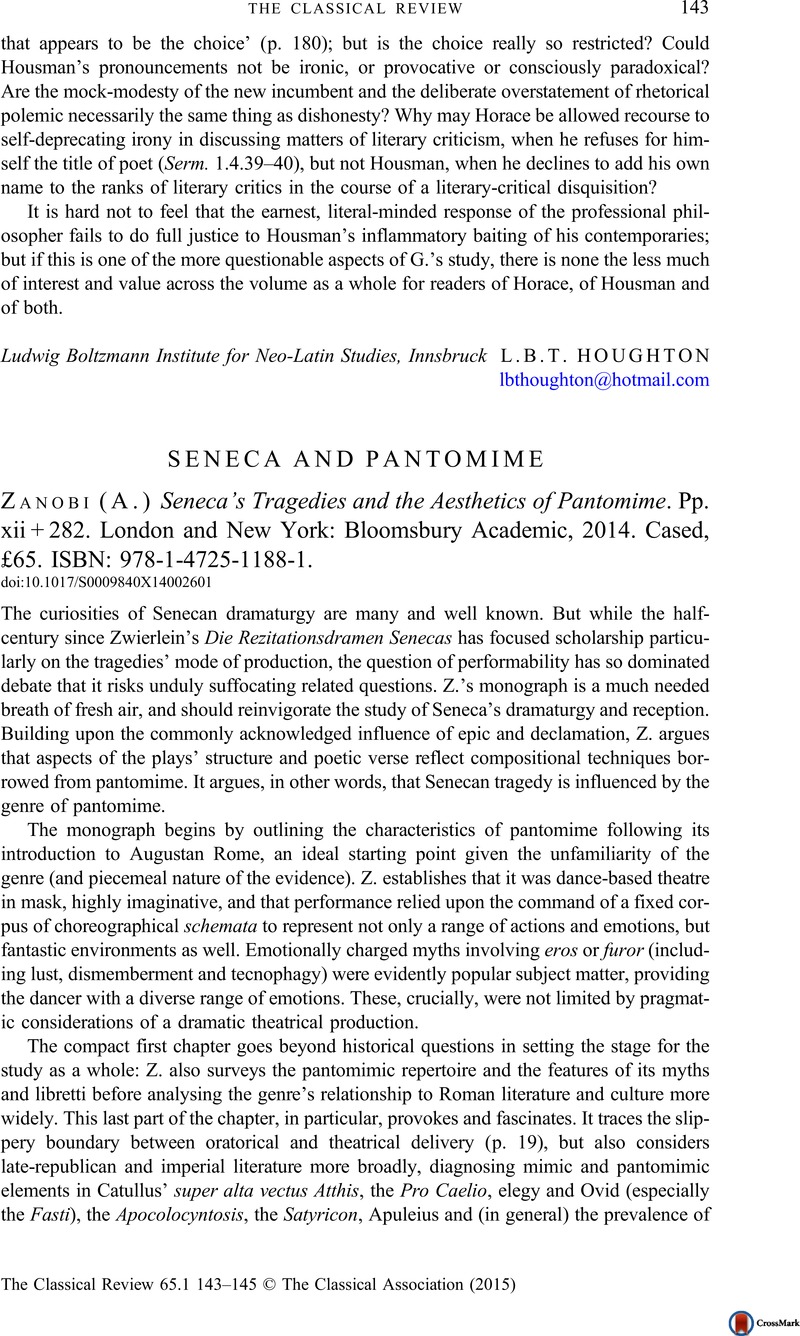No CrossRef data available.
Published online by Cambridge University Press: 17 December 2014

1 E.g. ‘it seems likely the fourth chorus of Medea [describing Medea at the peak of her furor] … has strong affiliation with tragic pantomime’ (p. 100); ‘the presence of the verb iactare [Ph. 366] … which is vox propria for pantomime, may be an additional sign of the pantomimic nature of the description’ (p. 115); ‘Since Seneca must have been well aware of this popularity [sc. of pantomime], he may have included pantomimic elements to make his tragedies more popular’ (p. 201).
2 E.g. the ‘alien’ technique of description ‘derives from the penetration into Seneca's tragic texts of the stylistic technique of composition of pantomimic libretti’ (p. 90); ‘it is possible that the language of pantomime … may have affected Seneca's writing’ (p. 202).
3 The lyric exchange in act 1 of Troades, for example, ‘could well bear the sign of the influence of the aesthetics of pantomime’ (p. 85). Similarly, ‘The idea that pantomime played a part in the performance of the problematic scripts that have come down to us as “Seneca's tragedies” can help to solve’ (p. 201).